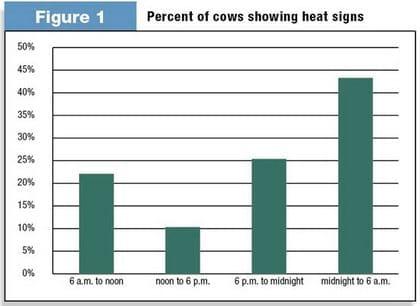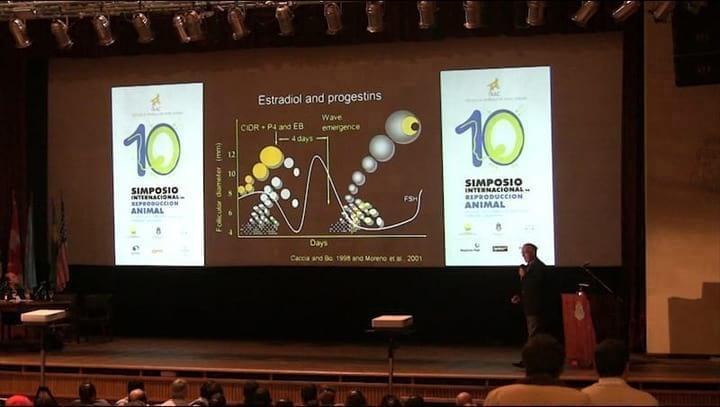Heat detection
The Importance of Heat Detection

• Red, moist, slightly swollen vulva
• Restless behavior: Bellowing, smelling other cows, butting with her head
• Attempts to mount other cows, but will not stand to be mounted
A good article, however, it fails to mention the most effective heat detection tools available today. Tailpaint, visual observation, teaser bulls ets are now outdated methods of heat detection. In the world's leading dairy industries, farmers are improving their heat detection rates (and profits) by using heat-mount detectors such as Bulling Beacon, Heat Seeker and ScratchE. Leading heat detection companies, such as Beacon Heat Detectors (Australia) offer a range of products to suit all requirements and budgets. These types of detectors eliminate the need to monitor your herd in person, reduces the chance of missed heats and require less skill and experience to interpret when a cow is cycling.
Thanks for the nice article. It is very important to heat detection for herd fertility and profitability of farm. It is also important to accurate heat detection and timing of insemination. Among others it is very important to observe that during time of insemination body temperature of cow not to be higher than normal body temperature of cow.
It is good effort to make the Dairy Herd Managers to give due attention to most neglected factor ply pivotal role to make dairy farming activity viable & economical. Keeping in view deep observation of each animal during early and late night not only help heat detection but can also useful for over all health improvement of the herd , If dairy herd managers chalked out some breeding calendar suitable to their Ecological Conditions may further improve the breeding & reproductive indicators for successful dairy farming,
However my practical experience in this relevance is as under,
1) Chin Ball Marker Technique (CBMT) is most suitable for!
A) Every type of livestock either small & large ruminants
B) It is also use full for all type of environment with the help of teaser male animal
2) Heat Synchronization ( HS) in which all the selected breeding females are given hormonal therapy to come in heat at the same time mostly this technique is used in !
A) Wondrous technique of Embryo Transfer Technology (ETT) is another successful practice
B) It is also useful To manage continuous milk production at certain peak periods desired according to set goal and target already fixed for farm (Continuous Milk Production Flow) keeping in view the seasonality variation in supply & gap of milk production
C) It can also be used as hand tool to synchronize the ( Herd Replacement Stock )
I have had problems with my dairy herd on the same issue of heat detection. This article is a real eye openner. I take this opportunity to thank the author for his insightful contribution , thank you and may god open to you more,
Thitai ngatia from Kenya, Nyeri County
Thanks for the great article, Even though a major share of information listed here share the insights of heat detection in a large commercial dairy operation, personally i feel that few points can be addeed such as most of the times of their socialization occurs on return from the parlor(not immidieately) but after spending some time at the feed bunk and alos the time when they had taken to the parlor in the alleys it will surely exibit both mounting others nad to be mounted.
In my opinion, it is of rarest possibility that abortion could occur by AI in a previously pregnant animal, even witht false heat, AI technician rarely he misses this on rectal palpation or atleast he will rethink of ot or would subject the animal for a vet check to confirmm the eraly pregnancy than to poke unncecssarily at the cervical plug.
Combinations of unrecognized estrus and low conception rates may lead to culling of normal cows : Normally the breeders are advised to put the cows which are not becoing pregnant after 3- 4 estrus cycles for vet check, witht advancements with all the estrus synch protocols the point above nmentioned may be ofd rarest possible scenario.
thanks
Very Informative article, but need more concentration on Heat detection Tools like Tail Paint Marker and other electronic devices, Activity Monitoring Devices may helpful in buffaloes or animals showing silent heat. its really wonderful article to help dairy farmers to minimize their loses














